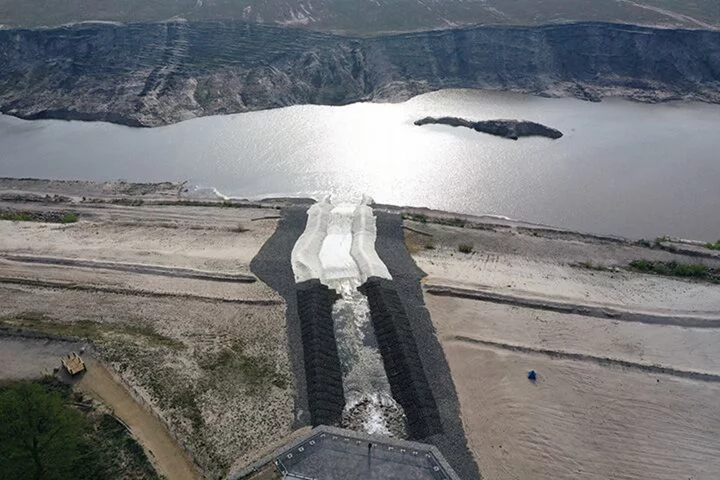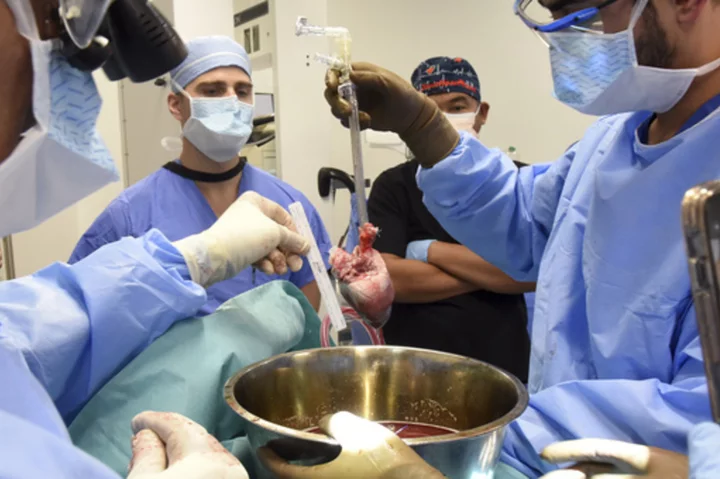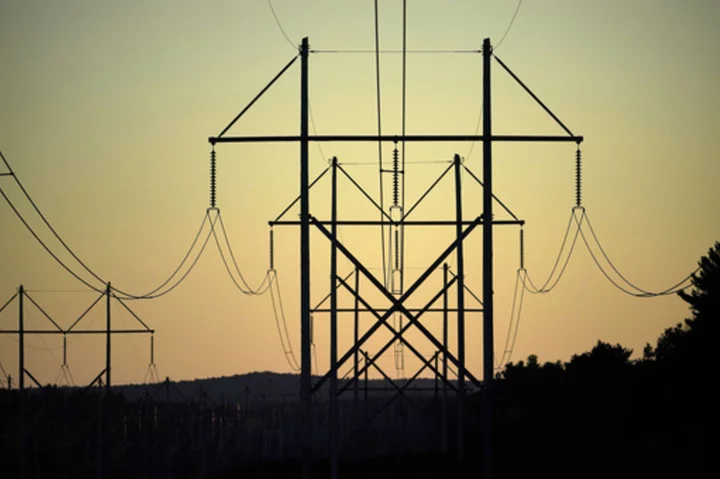On extremely hot and dry summer days, water in Berlin’s Spree River gets sucked upstream by an array of pumps to ensure the German capital has enough to drink. Reversing the natural flow is set to become more frequent as the country’s exit from coal means a key source of water is lost.
With Berlin already facing less rainfall due to the climate crisis, the end of lignite mining in nearby regions means groundwater pumped out to extract the fossil fuel will no longer feed the Spree. On top of that, old mines are being flooded to create man-made lakes, further draining resources.
As a result, the critical artery for the city of 3.6 million could end up with 50% to 75% less water in dry summer months, according to a study released this week by the German Environment Agency.
“This is a very serious situation,” Dirk Messner, president of the government agency, said in an interview. “The majority of water that Berlin is using for drinking comes exactly from this river.”
Surrounded by lakes and swamps, Berlin wouldn’t automatically seem at risk for water shortages, but its ecosystem is finely balanced and is losing a key pillar. For more than a century, water from lignite mines fed the Spree and supported the marshy Spreewald, a UNESCO-protected biosphere.
But as soon as 2030, Germany will end the use of coal and lignite and that source will cease, making the region more dependent on rainfall. Plans to prevent erosion and landslides in the massive open-pit mines will add to the problem by soaking up water resources.
Read More: Two Weeks Into Summer and River Rhine Waters Are Already Dipping
The dilemma reflects the ripple effects of climate change. Even measures to unwind the world’s reliance on fossil fuels can have unintended consequences.
Around two hours south of Berlin, the “Cottbuser Ostsee” is under development by LEAG, Germany’s second-largest mining company. Planned as a recreation area, the former Cottbus-Nord mine is being flooded with 84 million cubic meters of water — equivalent to 40% of the city’s annual water consumption. After it’s finished around 2025, Germany’s largest man-made lake will boast five beaches, a yacht harbor, and the country’s largest floating solar plant.
The flooding will not only reduce inflows into the Spree, but vast amounts of water will be lost through evaporation, according to the government’s study, urging the Cottbuser Ostsee to be used as storage that can be tapped in the hot summer.
But that would be high season for bathers and boaters, and LEAG is pushing back. Using the lake as a drinking-water reservoir “was not the subject of the application” for redevelopment, a spokeswoman said, adding that “viable and sustainable concepts for dealing with the water-management consequences resulting from the coal phase-out” are now needed.
Despite being one of the few major cities with a self-sufficient water system, Berlin has historically been relatively arid, with some of the lowest rainfall rates in Germany. Due to climate change, it will get worse. A study from Zurich’s ETH estimated that cities in the northern hemisphere will develop conditions equivalent to locations that are now 1,000 kilometers to the south. That would make Berlin more like southern France.
Berlin’s growth — the city forecasts nearly 4 million residents by 2040 — is adding to the strain. A particular sore spot is Tesla Inc.’s factory in the suburb of Grünheide. During construction in 2021, Chief Executive Officer Elon Musk enraged local activists by belittling their concerns. The plant — located in a protected water area — is estimated to use as much as 60,000 people. Tesla didn’t respond to requests for comment.
Read More: Musk Laughs Off Concern Tesla German Plant Will Sap Water Supply
Berlin’s legislature is working on a “master plan” to secure supplies for homes and businesses. It calls for demand reduction especially in peak times and more strategic planning between Berlin and other nearby states.
One of the solutions is a huge concrete pool under construction in Schönerlinde, a small town on Berlin’s northern rim. Here, a new facility is being built to further purify treated sewage. The city’s water supplier Berliner Wasserbetriebe will invest €2 billion ($2.2 billion) by 2031 to upgrade its six wastewater treatment plants — including an ultraviolet system that’s likely to become Germany’s largest solarium. Projects aimed at climate-proofing the entire municipal water system total €6 billion.
Instead of letting treated wastewater flow down the Spree into the North Sea, the utility would like to pump it to the city’s so-called blue pearls, but that’s currently prohibited by national legislation. About half of the roughly 350 ponds in Berlin are under “severe” stress, according to a report from environmental group BUND.
“Berlin’s water bodies, woods and swamps are already in the intensive care unit,” said Christian Schweer, a water expert from BUND’s Berlin chapter. “If there’s even less water coming in the next years, the situation will become dramatic.”
To prepare for a hotter future, Berlin is also seeking to keep more of its rain, according to Darla Nickel, head of Berlin’s Rainwater Agency. The “sponge city” concept calls for more planted roofs, storage tanks and fewer sealed ground surfaces to prevent run-off. The city is trying everything to head off scarcity, “but we can by no means compensate the causal problem,” she said.
That means that when it’s hot and dry, a sluice near the central Alexanderplatz will stop the flow of water in the Spree. Then pumps will reverse the river’s course diverting it into the city’s largest facility for treating drinking water. One way out is a water-management system that connects the regions via storage, reservoirs and redirects streams to Berlin.
“This is a different scenario from doing little or nothing,” the Environment Agency’s Messner said. But there’s a catch: “These other rivers are also running out of water.”









